Dolch Sight Words Teaching Resources
Help students quickly learn the Dolch Sight Words list with a range of teacher-created literacy resources for kindergarten, first-grade, second-grade, and third-grade readers.
This collection includes sight word games and flashcards, Google Interactive activities, reading center activities, printable Dolch sight word worksheets, digital learning resources and more curriculum-aligned teaching resources that have undergone rigorous review by our expert teacher team to ensure they're ready for your readers!
Want to learn more about the Dolch sight words list and the man behind them? Read on for a primer from our teacher team!
What Are Dolch Sight Words?
Dolch sight words are words used in teaching young children to read. This list includes high-frequency words which commonly appear in children's books.
The Dolch sight words are named for Professor Edward William Dolch, who compiled the first list of words and published them in Problems in Reading in 1948.
They're called "sight words" because children are taught to memorize this list of words in order to recognize them on sight, as many cannot be sounded out easily.
How Many Dolch Sight Words Are There?
The Dolch Sight Word list includes the 220 most common words and 95 additional nouns from children's books. The words are listed in alphabetical order on the sight word list, although they are not necessarily taught in that order in the classroom.
The 220 words on the Dolch list are divided into five categories:
- Pre-primer
- Primer
- First grade
- Second grade
- Third grade
Who Was Edward Dolch?
Curious about the man whose name is on your students' sight words list? Professor Edward William Dolch was a researcher and educator in the field of reading education.
He is best known for his work on sight word vocabulary development and, of course, his Dolch Word Lists. Dolch was a professor of education at the University of Illinois and also served as the director of the university's reading clinic.
What Is the Difference Between Dolch and Fry Sight Words?
Our extensive collection of sight words resources for elementary teachers includes not just the Dolch list but the Fry list too. Both Dolch and Fry sight words are used as part of sight word instruction and they're considered important for early reading development, as they make up a large percentage of the words in most texts.
So what's the difference?
The words on the Dolch list are generally shorter, more basic words that are commonly used in children's books. The Fry list includes words that are longer and more complex than the Dolch words, and are used in a wider variety of texts and contexts.
- Plus Plan
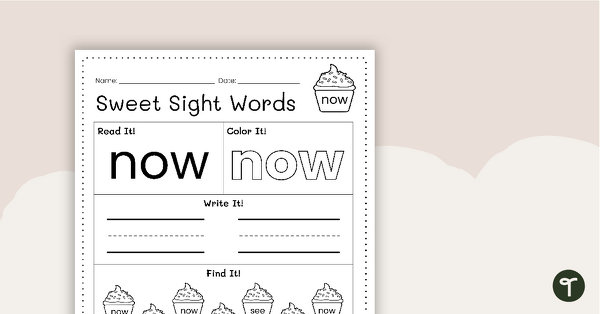
Sweet Sight Words Worksheet - NOW
Practice reading, writing, and identifying the high-frequency word “now” from the Kindergarten-level Dolch sight words list.
- Plus Plan
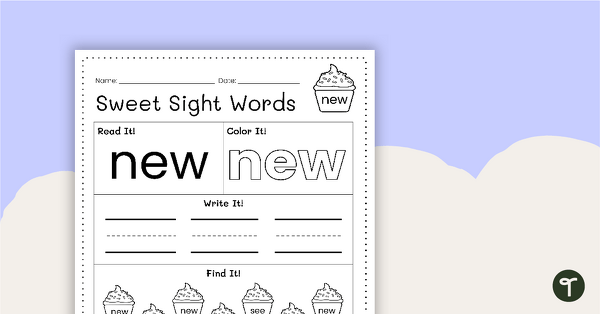
Sweet Sight Words Worksheet - NEW
Practice reading, writing, and identifying the high-frequency word “new” from the Kindergarten-level Dolch sight words list.
- Plus Plan
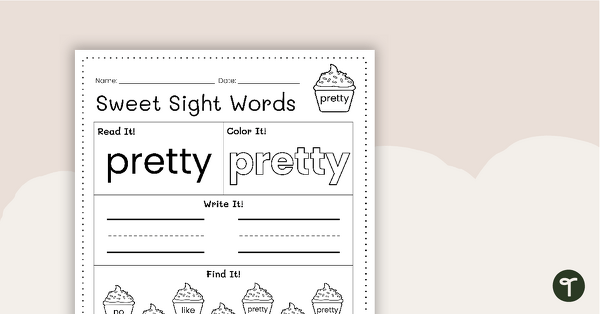
Sweet Sight Words Worksheet - PRETTY
Practice reading, writing, and identifying the high-frequency word “pretty” from the Kindergarten-level Dolch sight words list.
- Plus Plan
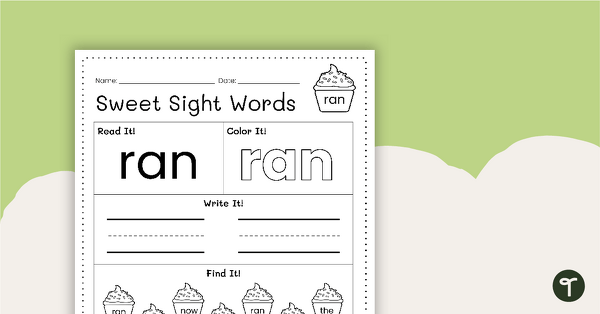
Sweet Sight Words Worksheet - RAN
Practice reading, writing, and identifying the high-frequency word “ran” from the Kindergarten-level Dolch sight words list.
- Plus Plan
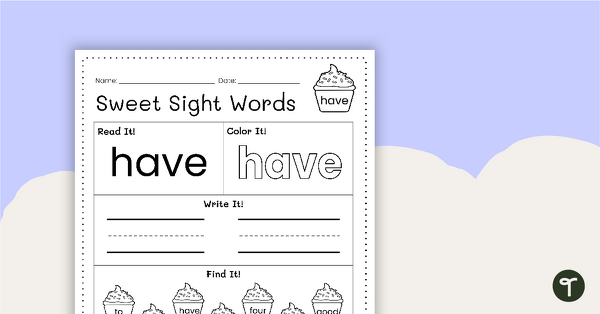
Sweet Sight Words Worksheet - HAVE
Practice reading, writing, and identifying the high-frequency word “have” from the Kindergarten-level Dolch sight words list.
- Plus Plan
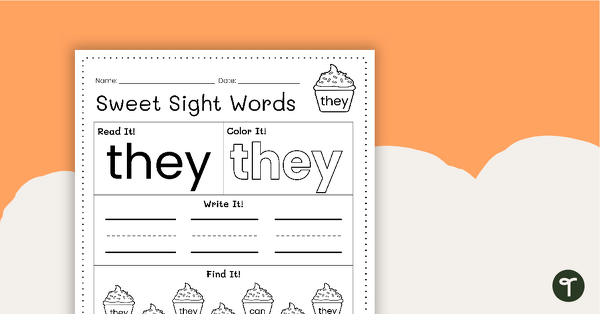
Sweet Sight Words Worksheet - THEY
Practice reading, writing, and identifying the high-frequency word “they” from the Kindergarten-level Dolch sight words list.
- Plus Plan
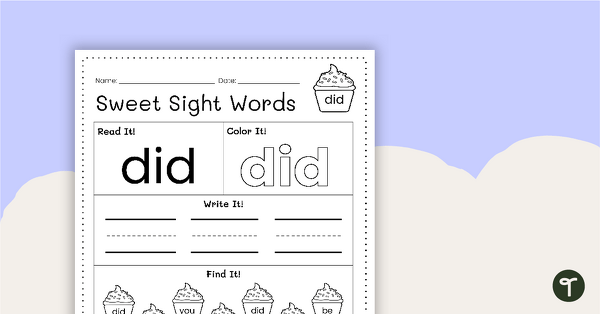
Sweet Sight Words Worksheet - DID
Practice reading, writing, and identifying the high-frequency word “did” from the Kindergarten-level Dolch sight words list.
- Plus Plan
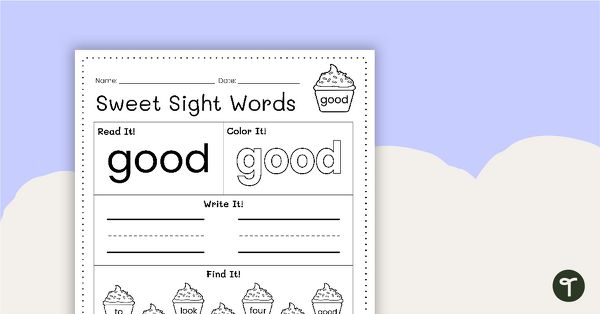
Sweet Sight Words Worksheet - GOOD
Practice reading, writing, and identifying the high-frequency word “good” from the Kindergarten-level Dolch sight words list.
- Plus Plan
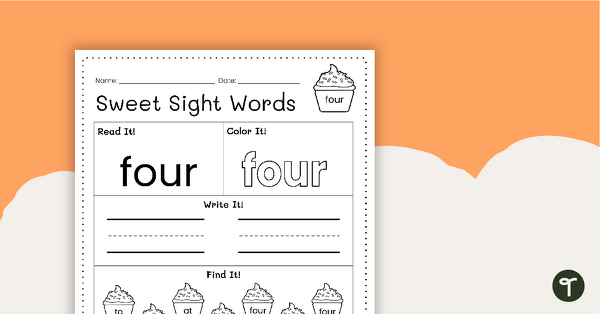
Sweet Sight Words Worksheet - FOUR
Practice reading, writing, and identifying the high-frequency word “four” from the Kindergarten-level Dolch sight words list.
- Plus Plan
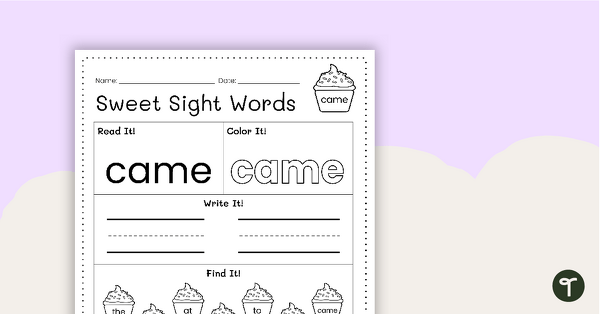
Sweet Sight Words Worksheet - CAME
Practice reading, writing, and identifying the high-frequency word “came” from the Kindergarten-level Dolch sight words list.
- Plus Plan
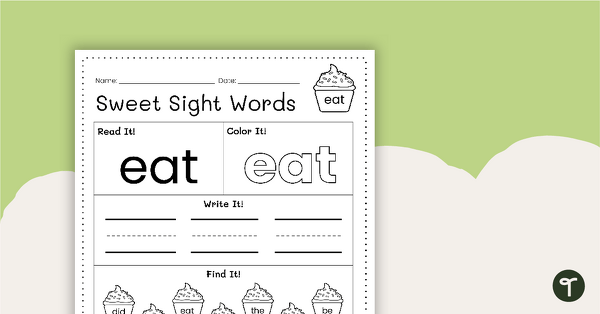
Sweet Sight Words Worksheet - EAT
Practice reading, writing, and identifying the high-frequency word “eat” from the Kindergarten-level Dolch sight words list.
- Plus Plan
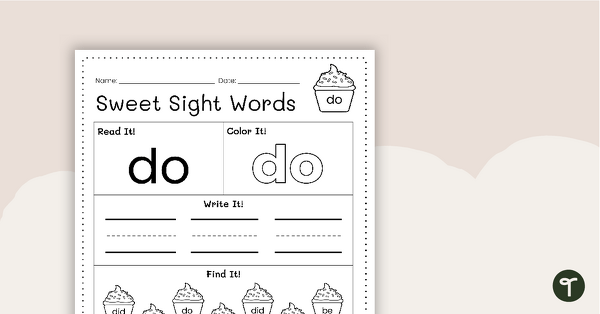
Sweet Sight Words Worksheet - DO
Practice reading, writing, and identifying the high-frequency word “do” from the Kindergarten-level Dolch sight words list.
- Plus Plan
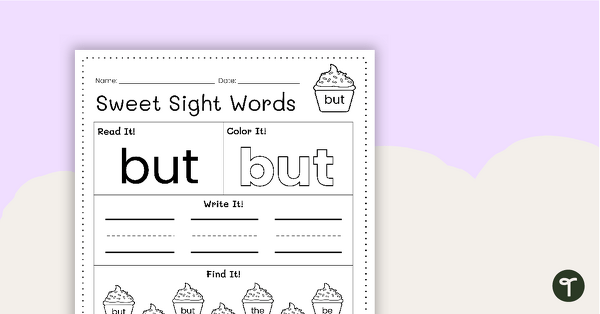
Sweet Sight Words Worksheet - BUT
Practice reading, writing, and identifying the high-frequency word “but” from the Kindergarten-level Dolch sight words list.
- Plus Plan
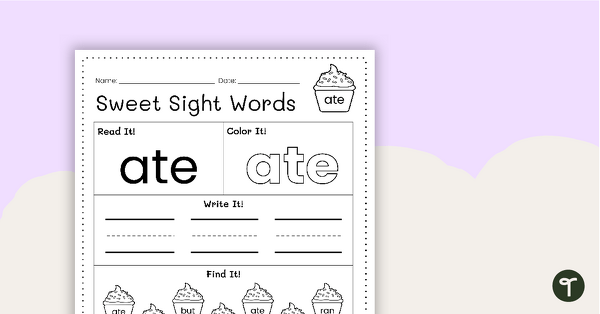
Sweet Sight Words Worksheet - ATE
Practice reading, writing, and identifying the high-frequency word “ate” from the Kindergarten-level Dolch sight words list.
- Plus Plan
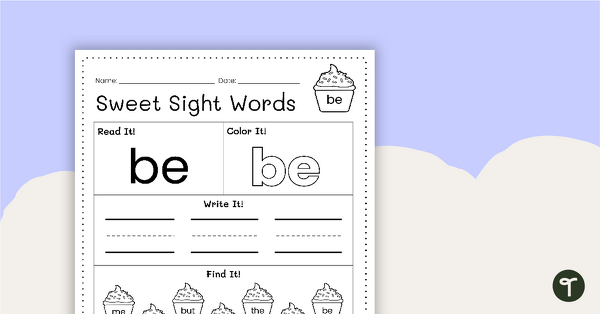
Sweet Sight Words Worksheet - BE
Practice reading, writing, and identifying the high-frequency word “be” from the Kindergarten-level Dolch sight words list.
- Plus Plan

Sweet Sight Words Worksheet - WAS
Practice reading, writing, and identifying the high-frequency word “was” from the Kindergarten-level Dolch sight words list.
- Plus Plan
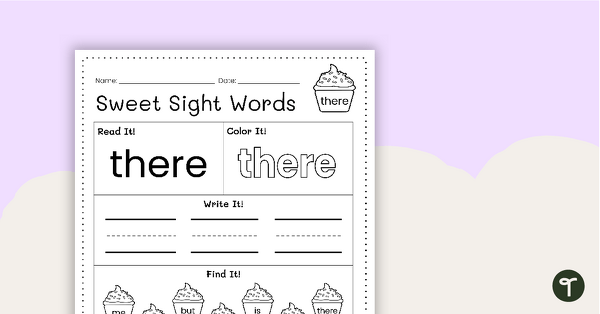
Sweet Sight Words Worksheet - THERE
Practice reading, writing, and identifying the high-frequency word “there” from the Kindergarten-level Dolch sight words list.
- Plus Plan
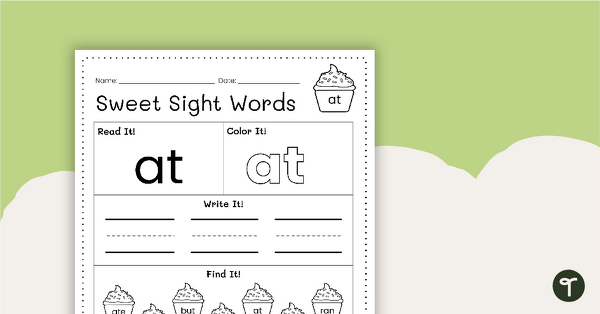
Sweet Sight Words Worksheet - AT
Practice reading, writing, and identifying the high-frequency word “at” from the Kindergarten-level Dolch sight words list.
- Plus Plan
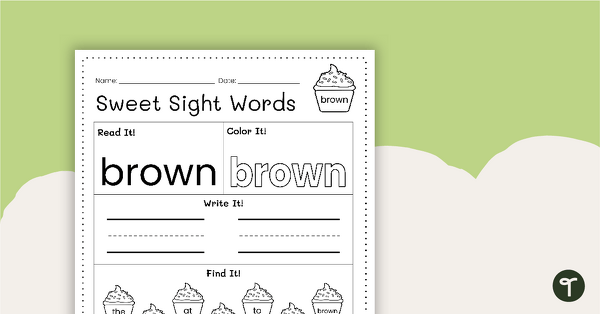
Sweet Sight Words Worksheet - BROWN
Practice reading, writing, and identifying the high-frequency word “brown” from the Kindergarten-level Dolch sight words list.
- Plus Plan
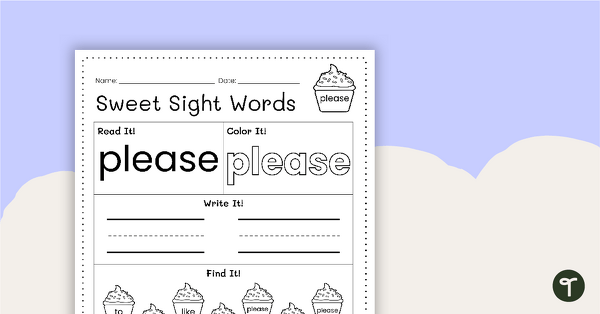
Sweet Sight Words Worksheet - PLEASE
Practice reading, writing, and identifying the high-frequency word “please” from the Kindergarten-level Dolch sight words list
- Plus Plan
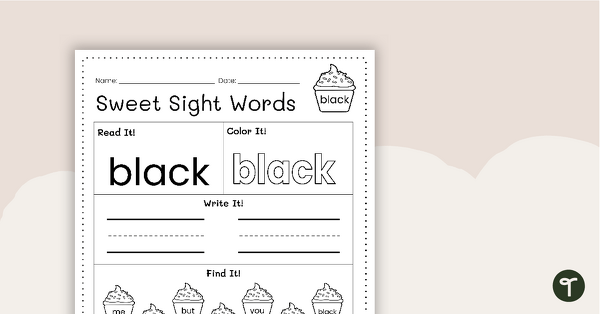
Sweet Sight Words Worksheet - BLACK
Practice reading, writing, and identifying the high-frequency word “black” from the Kindergarten-level Dolch sight words list.
- Plus Plan
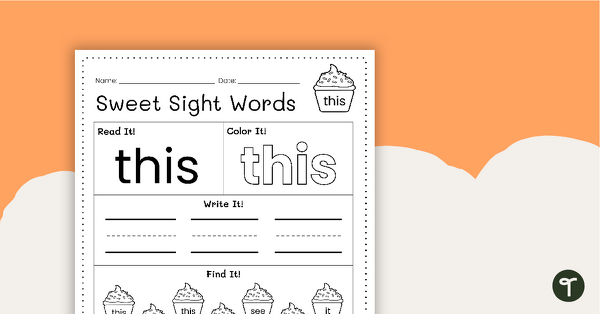
Sweet Sight Words Worksheet - THIS
Practice reading, writing, and identifying the high-frequency word “this” from the Kindergarten-level Dolch sight words list.
- Plus Plan

Sweet Sight Words Worksheet - OUR
Practice reading, writing, and identifying the high-frequency word “our” from the Kindergarten-level Dolch sight words list.
- Plus Plan
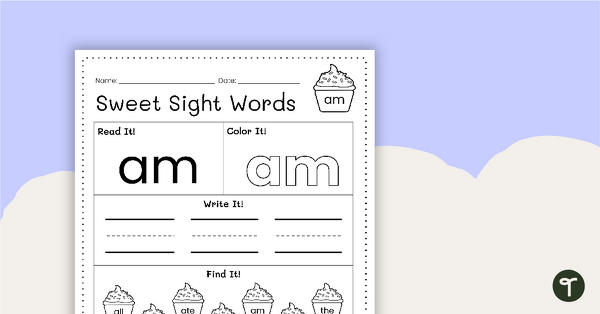
Sweet Sight Words Worksheet - AM
Practice reading, writing, and identifying the high-frequency word “am” from the Kindergarten-level Dolch sight words list.
- Plus Plan
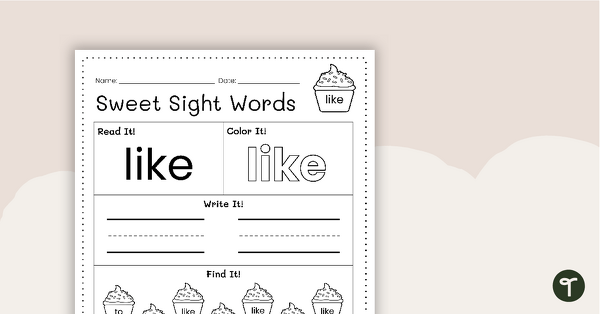
Sweet Sight Words Worksheet - LIKE
Practice reading, writing, and identifying the high-frequency word “like” from the Kindergarten-level Dolch sight words list.
- Plus Plan
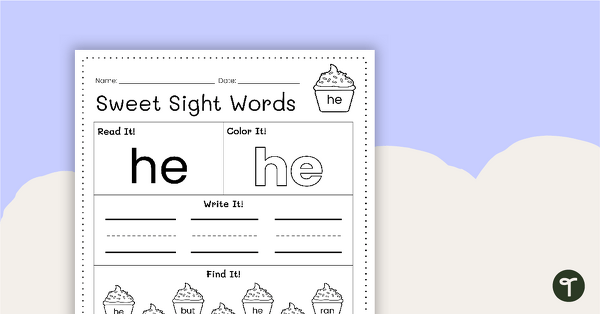
Sweet Sight Words Worksheet - HE
Practice reading, writing, and identifying the high-frequency word “he” from the Kindergarten-level Dolch sight words list.
- Plus Plan
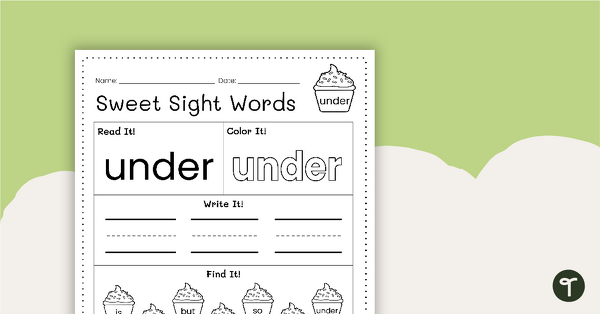
Sweet Sight Words Worksheet - UNDER
Practice reading, writing, and identifying the high-frequency word “under” from the Kindergarten-level Dolch sight words list.
- Plus Plan

Sweet Sight Words Worksheet - TOO
Practice reading, writing, and identifying the high-frequency word “too” from the Kindergarten-level Dolch sight words list.
- Plus Plan
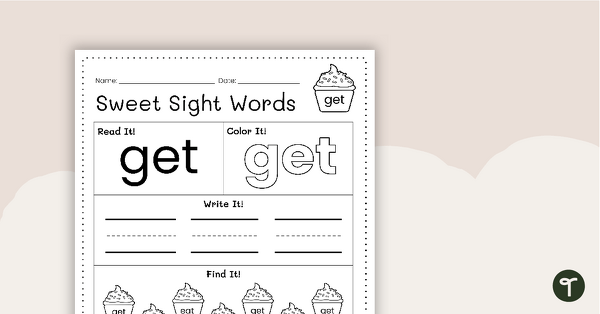
Sweet Sight Words Worksheet - GET
Practice reading, writing, and identifying the high-frequency word “get” from the Kindergarten-level Dolch sight words list.
- Plus Plan
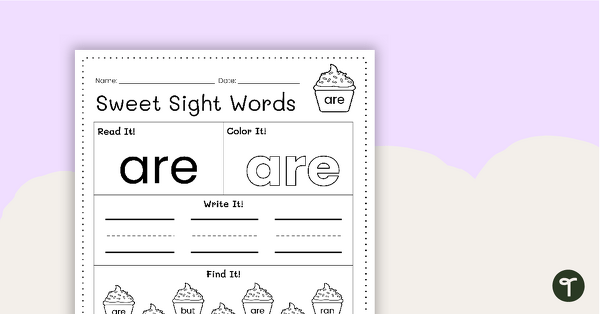
Sweet Sight Words Worksheet - ARE
Practice reading, writing, and identifying the high-frequency word “are” from the Kindergarten-level Dolch sight words list.
- Plus Plan
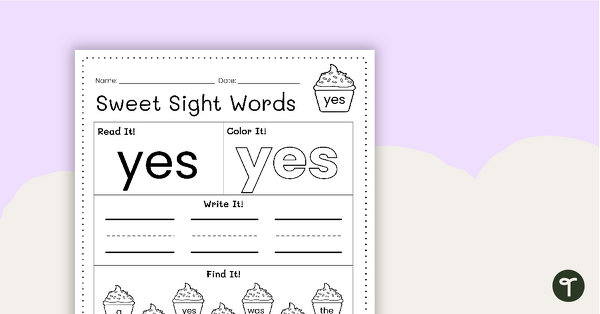
Sweet Sight Words Worksheet - YES
Practice reading, writing, and identifying the high-frequency word “yes” from the Kindergarten-level Dolch sight words list.
- Plus Plan
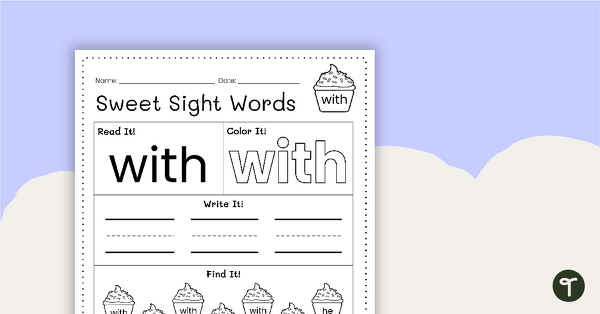
Sweet Sight Words Worksheet - WITH
Practice reading, writing, and identifying the high-frequency word “with” from the Kindergarten-level Dolch sight words list.